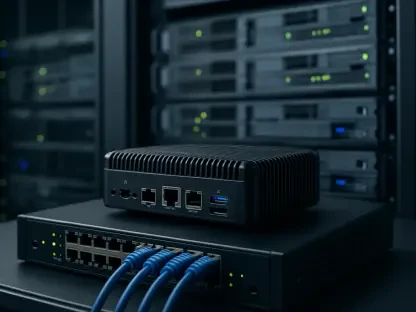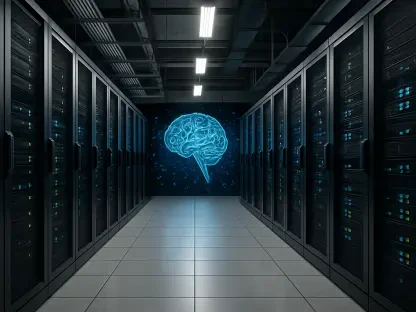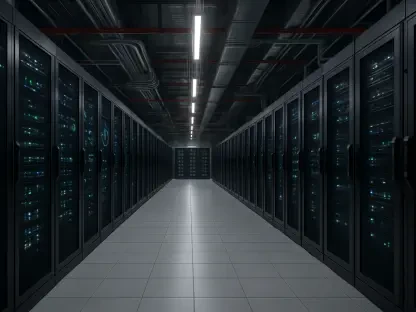The multi-access edge computing (MEC) market is experiencing rapid growth, projected to surpass a valuation of USD 46.9 billion by 2032. This expansion is primarily driven by the global deployment of 5G networks, which require ultra-low latency and high bandwidth. The demand for real-time data processing near end users positions MEC as a critical solution, enabling localized processing at the network’s edge. This reduces delays and enhances efficiency for various applications, including autonomous vehicles, smart cities, and augmented reality.
The Role of 5G in MEC Market Growth
5G Technology and Real-Time Data Processing
The deployment of 5G networks is a significant catalyst for the MEC market. 5G technology demands real-time data processing near end users, making MEC essential for reducing latency and improving efficiency. This localized processing capability is crucial for applications such as autonomous vehicles, which require instantaneous data analysis for safe operation. Similarly, augmented reality applications benefit from MEC’s ability to process data quickly and locally, providing seamless user experiences.
The potential of MEC in transforming connected technologies is vast. For autonomous vehicles, real-time data processing is indispensable for safely navigating through traffic and reacting to dynamic driving conditions. MEC ensures that data processing happens close to the vehicle, minimizing latency and maximizing the response time. Additionally, augmented reality and virtual reality technologies hinge on immediate data processing to deliver immersive and engaging experiences. By processing data at the edge, MEC significantly reduces lag, enhances the user experience, and enables more sophisticated applications.
Innovations Driven by 5G Connectivity
The rising adoption of 5G connectivity is fostering innovations across various sectors. In telemedicine, for instance, MEC enables real-time patient monitoring and remote surgeries, enhancing healthcare delivery. Industrial automation also benefits from MEC, as it allows for real-time control and monitoring of manufacturing processes. Next-generation entertainment, including virtual reality and immersive gaming, relies on MEC to deliver high-quality, low-latency experiences to users.
These innovations demand robust and efficient data processing capabilities, which is where MEC comes in. For telemedicine, the ability to monitor patients in real-time and support complex medical procedures remotely can revolutionize healthcare, making advanced medical services accessible to remote and underserved populations. Meanwhile, industrial automation requires instantaneous data feedback to optimize production processes, reduce downtime, and enhance productivity. In the realm of entertainment, the instantaneous processing enabled by MEC ensures that users experience smooth, lag-free virtual reality and gaming environments. This paves the way for more interactive and immersive digital experiences.
Smart Cities and Connected Vehicles
Development of Smart Cities
The continuous development of smart cities significantly boosts the demand for integrated edge computing solutions. Smart cities rely on real-time data from IoT devices to manage urban infrastructure effectively. MEC’s capability to process data locally and promptly is pivotal in reducing latency and ensuring the necessary responsiveness for these advanced systems. This localized processing helps in managing traffic, optimizing energy usage, and enhancing public safety.
Smart city infrastructure thrives on the seamless integration and analysis of data from a myriad of IoT devices. Managing traffic flows and reducing congestion requires real-time data from various sensors and devices, which MEC can process at the network’s edge to deliver immediate actionable insights. Energy optimization in smart grids and public utilities can also benefit from MEC by ensuring that data on consumption and distribution is processed locally and swiftly, enhancing the efficiency and reliability of urban services. Public safety systems in smart cities, from surveillance to emergency response, rely on MEC’s ability to provide instantaneous data processing, ensuring timely and effective interventions.
Connected Vehicle Ecosystems
Connected vehicles require instantaneous data processing for safety and communication features. MEC plays a crucial role in this ecosystem by enabling real-time data analysis and decision-making. This ensures that vehicles can communicate with each other and with infrastructure, enhancing road safety and traffic management. The integration of MEC in connected vehicle systems supports the development of autonomous driving technologies and smart transportation networks.
In a connected vehicle ecosystem, the need for low latency is paramount. Real-time communication between vehicles and infrastructure facilitates a safer driving environment by enabling quick and accurate data exchange, leading to faster decision-making in critical situations. MEC enables the processing of large volumes of data generated by connected vehicles locally, ensuring that the information is analyzed and acted upon without delay. This rapid processing capability is essential for the advancement of autonomous driving technologies, which rely heavily on immediate responses to ensure passenger safety and compliance with traffic regulations. Moreover, smart transportation networks benefit from MEC by centralizing traffic management, optimizing route planning, and reducing congestion through coordinated and efficient data analysis.
Hardware and Cloud-Based Solutions
Evolution of Hardware Segment
The hardware segment within the MEC market is notable, accounting for USD 1.6 billion in 2023. This segment continues to evolve with a focus on edge-optimized solutions. Traditional data center hardware is being redesigned to meet the specific demands of edge computing, resulting in more compact, rugged, and energy-efficient designs. These advancements include edge-specific processors, storage, and memory solutions, which are crucial for deployments in diverse environments, from industrial sites to remote locations.
The evolution in the hardware segment is driven by the necessity to support a wide array of applications in various environments, hence the need for more rugged and energy-efficient solutions. Edge-specific processors have been developed to handle the unique computational demands of edge computing, optimizing performance while minimizing power consumption. Storage and memory solutions have also seen innovations aimed at providing reliable and swift data access in often challenging and diverse settings. These hardware improvements are crucial for ensuring that edge computing can be effectively deployed in both urban infrastructures and remote areas, thereby expanding the reach and applicability of MEC technology.
Cloud-Based Deployment Models
Cloud-based solutions are expected to achieve a valuation exceeding USD 35.7 billion by 2032. The growing embrace of serverless computing is a notable factor driving cloud adoption. Serverless computing simplifies application development by eliminating the need for server management, enhancing flexibility, scalability, and efficiency. This is particularly beneficial for event-driven applications, as it reduces operational costs and streamlines development processes.
The adoption of cloud-based MEC solutions is revolutionizing how applications are developed and managed. Serverless computing, in particular, allows developers to focus on building applications without worrying about the underlying server infrastructure. This not only boosts productivity and innovation but also offers cost savings by scaling resources up or down based on demand. In event-driven applications, the ability to quickly respond to changes in real-time without the overhead of managing servers enhances efficiency. This makes serverless computing an ideal partner for MEC, providing flexible, scalable, and cost-effective solutions suited for dynamic and high-demand environments, further driving the growth of the MEC market.
Regional Insights and Market Structure
North America’s Market Dominance
In 2023, North America led the MEC market, holding around 43% of the market share. This dominance is attributed to the region’s swift adoption of 5G technology, with a significant portion of global 5G connections originating from North America. The region’s advanced technological infrastructure and strong investment in 5G deployment contribute to its leading position in the MEC market.
The readiness and rapid adoption of 5G technology in North America have positioned the region as a leader in the MEC market. Significant investments in technological infrastructure and initiatives to roll out 5G more widely have created a conducive environment for MEC solutions to flourish. The dense network of technology firms, telecom operators, and innovative startups in North America acts as a fertile ground for the development and implementation of cutting-edge MEC technologies. This has led to the region’s robust presence in the global MEC market, setting benchmarks for other regions to follow.
Detailed Market Analysis
Global Market Insights Inc. provides a comprehensive analysis of the MEC market’s structure. The report outlines key elements, including the methodology and scope, encompassing a robust research approach and data collection methods. The forecast model incorporates base estimates and calculations, validating primary data sources and defining key market trends. The insights chapter elaborates on the industry ecosystem, examining the supplier landscape, including telecom operators, cloud service providers, hardware manufacturers, system integrators, and end-users.
Global Market Insights Inc. also elaborates on the profit margins and cost breakdowns for critical components in the MEC ecosystem. This includes an in-depth look at hydrogen storage systems, refueling infrastructure, and the maintenance and support required for MEC deployments. By dissecting these core elements, the report provides a clearer picture of the economic factors influencing the MEC market, making it easier for stakeholders to understand and navigate the financial landscape. Additionally, the analysis of the supplier landscape highlights the integral roles of various contributors, from telecom operators and cloud service providers to hardware manufacturers and end-users, underlining the collaborative nature required to drive the MEC market forward.
Technology and Innovation Landscape
Advancements in Edge Computing Technology
The technology and innovation landscape of the MEC market is dynamic, with continuous advancements in edge computing technology. The development of more efficient and powerful edge-specific processors, storage solutions, and memory technologies is driving the market forward. These innovations are essential for supporting the growing number of applications that rely on real-time data processing and low-latency communication.
The ongoing advancements in edge computing technology are critical for the MEC market’s expansion. Edge-specific processors, for instance, have been optimized to deliver high performance and energy efficiency, tailored for MEC applications. Storage solutions have evolved to offer faster data access and greater reliability, essential for environments requiring immediate data processing. Innovations in memory technology further boost the efficiency of edge computing, ensuring that data can be processed and retrieved without significant delays. These technological strides are not just supporting existing applications but are also paving the way for new, sophisticated uses of MEC in various sectors.
Regulatory Frameworks and Market Challenges
The multi-access edge computing (MEC) market is experiencing significant growth, with projections indicating it will exceed a valuation of USD 46.9 billion by 2032. This market expansion is largely fueled by the widespread deployment of 5G networks, which necessitate extremely low latency and substantial bandwidth. The growing need for real-time data processing close to end users underscores the importance of MEC as a vital solution. It facilitates localized processing at the network’s edge, thereby reducing delays and enhancing efficiency. This capability proves essential for a range of applications, including autonomous vehicles, smart cities, augmented reality, and advanced industrial automation. MEC’s ability to improve bandwidth utilization and lower operational costs makes it indispensable in today’s digital landscape. The advancements in 5G technology and the increasing adoption of Internet of Things (IoT) devices further propel the relevance and necessity of MEC, positioning it as a cornerstone of modern technology infrastructures driving innovation across multiple sectors.









